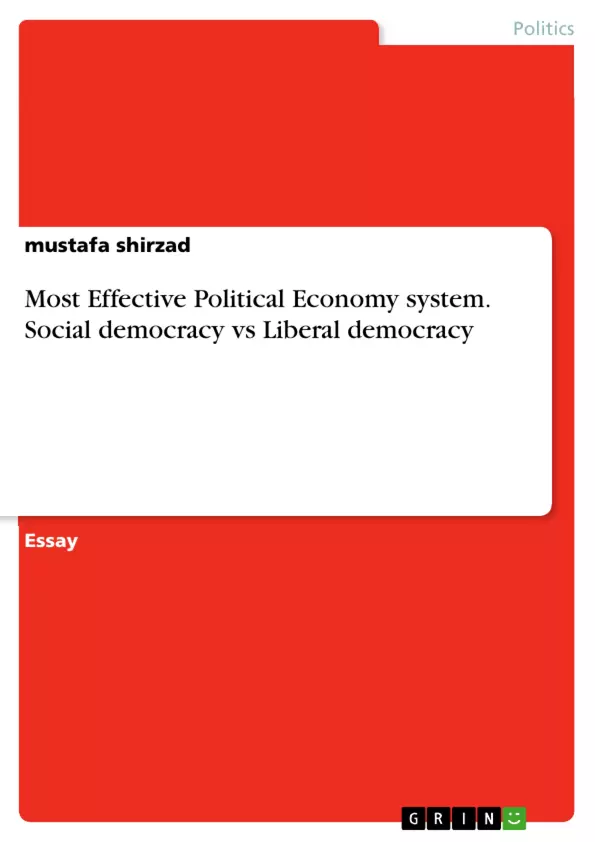The integration of both political and economic institutions for shaping the scope of equality and freedom has been the hot discussion of both politicians and economists in our dynamic era of globalization all around the world. Distribution of wealth, a balance level of equality and freedom and social security of the public have been influential elements of the political economic system, which are significant issues for achieving national prosperity and economic growth of the state.
The main goal of this research paper is to analyse and illustrate the comparisons of the world’s most dynamic political economic systems, which are Social democracy and Liberal democracy, and their contributions to economic growth and development. Social democratic systems will be better in providing economic growth and prosperity for nations regards to focusing on social welfare policies, establishing regulations for economic activities, managing of money and distribution of wealth, and maintenance of high living standard for public compared to liberal democracy.
Inhaltsverzeichnis (Table of Contents)
- Social Democracy Vs Liberal political economic system
- Social Democratic System
- Liberal Democratic System
- Comparison of Social Democracy and Liberal Democracy
- Criticism of Social Democratic System
- Modern Liberalism
Zielsetzung und Themenschwerpunkte (Objectives and Key Themes)
This research essay aims to analyze and compare the social democratic and liberal democratic political economic systems, focusing on their impact on economic growth and development. It examines the strengths and weaknesses of each system, considering their contributions to social welfare, wealth distribution, and overall prosperity.
- Social welfare policies and their impact on economic growth
- The role of state intervention in regulating economic activities
- The distribution of wealth and its implications for equality and prosperity
- The relationship between individual freedom and national economic well-being
- The potential for modern liberalism to synthesize the best elements of both systems
Zusammenfassung der Kapitel (Chapter Summaries)
The essay begins by introducing the concept of social democracy, tracing its origins and evolution from Marxism to the Scandinavian model. It highlights the emphasis on social welfare, market regulation, and state intervention in key sectors like banking and natural resources. The essay then contrasts this with the liberal democratic system, characterized by laissez-faire capitalism, individual freedom, and limited state intervention in the economy.
A detailed comparison follows, examining the strengths and weaknesses of each system. The essay highlights the higher GDP per capita and lower Gini index in Scandinavian countries compared to liberal democratic countries, suggesting a more equitable distribution of wealth in social democracies. It also explores the impact of strong welfare policies on social indicators like life expectancy and happiness.
The essay concludes by addressing criticism of social democracy, particularly concerns about state intervention and the potential for inequality. It then proposes modern liberalism as a potential synthesis of the best elements of both systems, emphasizing the importance of both individual freedom and collective well-being.
Schlüsselwörter (Keywords)
The key terms and concepts explored in this essay include: social democracy, liberal democracy, political economy, economic growth, social welfare, wealth distribution, state intervention, individual freedom, laissez-faire capitalism, modern liberalism, GDP per capita, Gini index, and happiness index.
- Quote paper
- mustafa shirzad (Author), 2016, Most Effective Political Economy system. Social democracy vs Liberal democracy, Munich, GRIN Verlag, https://www.grin.com/document/323067



